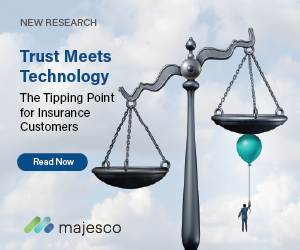Coral reefs are under considerable threat from climate change, with a fourth global mass coral bleaching event confirmed this year - the second in the past decade. As climate change intensifies, parametric insurance could play a crucial role in protecting these vulnerable ecosystems from escalating stresses.
In April, the Coral Reef Watch at the U.S. National Oceanographic and Atmospheric Administration confirmed the world's fourth recorded global coral bleaching event — following those in 1998, 2010 and 2014-2017. The latest event, which began in early 2023, is expected to surpass previous occurrences in both extent and severity, with more than three-quarters of the world's reefs having already experienced heat stress intense enough to bleach corals.
See also: What if 'Parametric Insurance' Meant More?
Marine heat waves drive bleaching
The current bleaching has been driven by multiple, linked factors. Chief among these are the record sea-surface temperatures in 2023, identified by the World Meteorological Organization as the hottest year on record for both the atmosphere and oceans, with elevated temperatures continuing throughout 2024. Marine heat waves, which contribute significantly to coral bleaching, are occurring against a backdrop of longer-term increases in sea surface temperature.
Local threats such as overfishing, sedimentation and runoff further weaken coral reefs, making them more susceptible to acute shocks such as tropical cyclones. These combined stressors mean that coral bleaching events, especially when coupled with extreme weather, can push ecosystems beyond their capacity to recover. This has potentially drastic consequences for marine biodiversity, food security and livelihoods.
What happens when water temperatures increase?
Warm-water corals thrive in temperatures between 23 and 29 degrees Celsius. When temperatures exceed this range significantly or for extended periods, corals expel the algae that give them color, leaving behind a white, carbonate structure — a process known as bleaching. Reef recovery is not guaranteed and is less likely when combined with other stressors, and corals cannot migrate to cooler waters.
The Degree Heating Weeks index measures heat stress intensity and duration on corals by summing temperature anomalies over a 12-week period, giving a total in degree weeks. At 4 degrees Celsius weeks, significant coral bleaching is likely, and at 8 degrees Celsius weeks, severe bleaching and significant reef mortality are expected.
Understanding coral reef composition is also crucial for assessing bleaching vulnerability, as the type of coral species and water depth influence outcomes, and some corals show adaptive capacity.
Parametric insurance for coral reef protection
Parametric insurance is emerging as a promising tool to protect ecosystems. It offers rapid funding for protection and restoration efforts following damaging events, such as tropical cyclones, enabling conservationists to respond swiftly and effectively. Several coral reef parametric solutions have been implemented in the Caribbean and Pacific regions to address tropical cyclone impacts.
Exploratory efforts are also under way to assess the potential of parametric insurance to protect against or minimize coral bleaching. This could involve using the DHW index, with pre-agreed payouts being triggered when the index exceeds a certain threshold. Two critical elements determine the feasibility of such insurance:
Insurability
This considers whether insurance markets would offer affordable policies underpinned by the DHW index. The high rate of ocean warming and increasing frequency of bleaching events may make policies prohibitively expensive; however, in geographies where marine heat waves are less connected to chronic ocean warming or where bleaching impacts from a heat wave represent underwriting portfolio diversification, insurance pricing may be more affordable.
Other important considerations include the structure of the product, which determines payout frequency and amount, and the influence of cyclical climate phenomena such as the El Niño Southern Oscillation, whose impact varies globally.
In cases where affordable insurance pricing is challenging to secure, alternative risk financing mechanisms could be pursued — for example, the establishment of a grant-capitalized fund that can be drawn on to finance response actions. The release of money from this fund could be underpinned by risk analytics, with payout timing and amount based on a metric such as the DHW. The fund itself could potentially be insured if payouts exceed a given amount within a year.
See also: Can Insurers Take the Lead on Climate Resiliency?
Payout use cases
This considers whether and how the rapid injection of capital could mitigate or minimize bleaching impacts. Several ideas are under development — for example, compensating people to not fish, deploying coral shades, administering marine probiotics and pumping cooler deep water, and scaling up reef monitoring. While a silver bullet solution is unlikely, tailoring interventions to a discrete location may yield local benefits.
While parametric insurance for coral bleaching faces significant challenges, it is likely to play a growing role in protecting against acute hazards such as tropical cyclones. This is driven by changes to the frequency and severity of acute hazards, the improved recognition of the critical ecosystem services that coral reefs provide, and the growing treatment of coral reefs as natural infrastructure and natural capital, opening the potential for new funding and enhanced protection.
When considering the critical contribution of coral reefs to economies and livelihoods, alongside the multiple and intensifying stressors they face, risk reduction and risk transfer are likely to prove integral to ensuring the survival of these ecosystems.
Why it matters
Coral reefs provide between $375 billion and $2.7 trillion in ecosystem services annually, crucial for the safety, nutrition, economic security, health and wellbeing of millions of people. They protect an estimated 150,000 kilometers of shoreline in more than 100 countries and territories, reducing wave energy by 97% and mitigating flood risk and erosion in coastal areas.
Coral reefs are also vital to ocean ecosystems, supporting 25% of all marine life. About 96% of those who fish are artisanal, working individually or in small communities, and rely on healthy reefs for roughly half of all global seafood.























